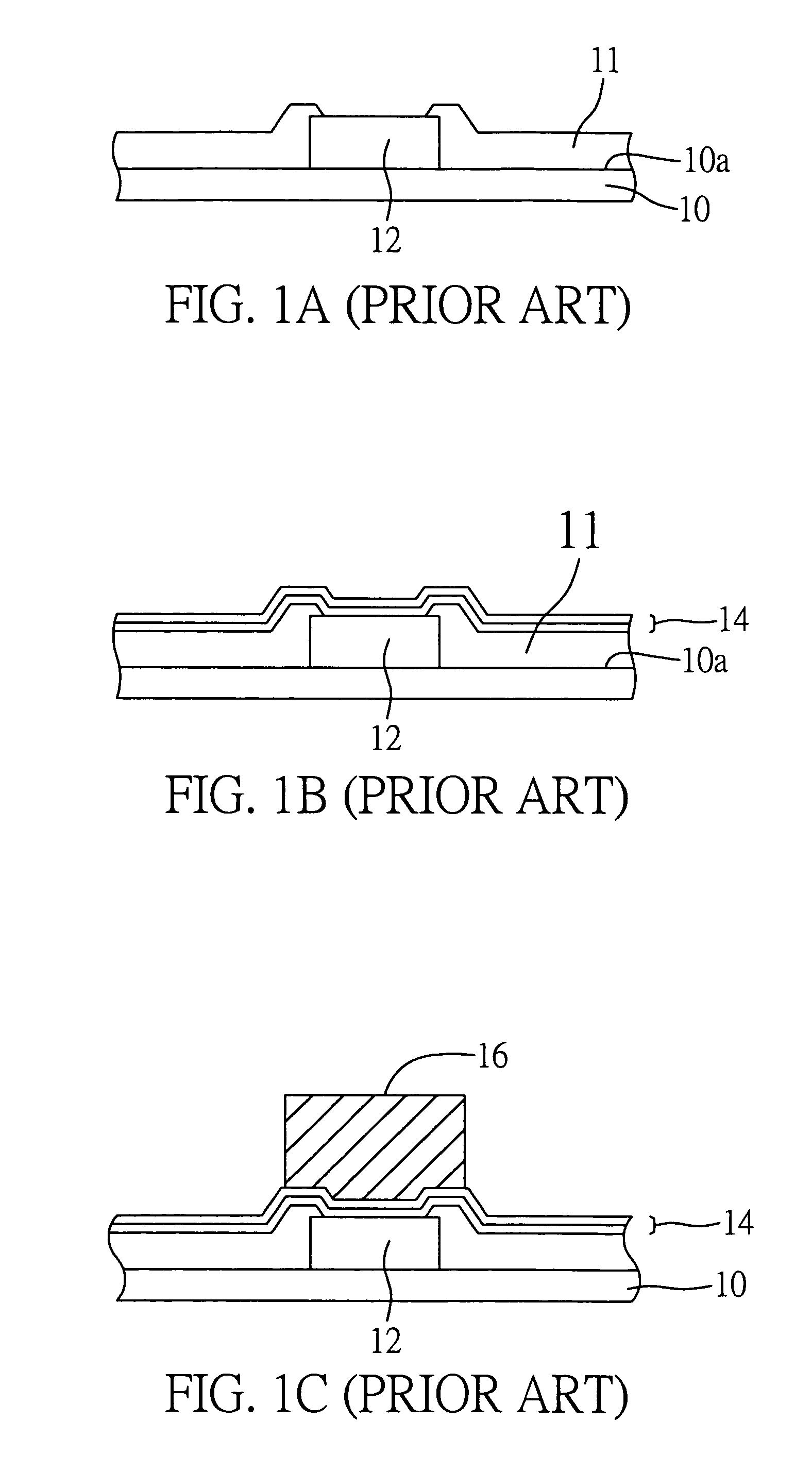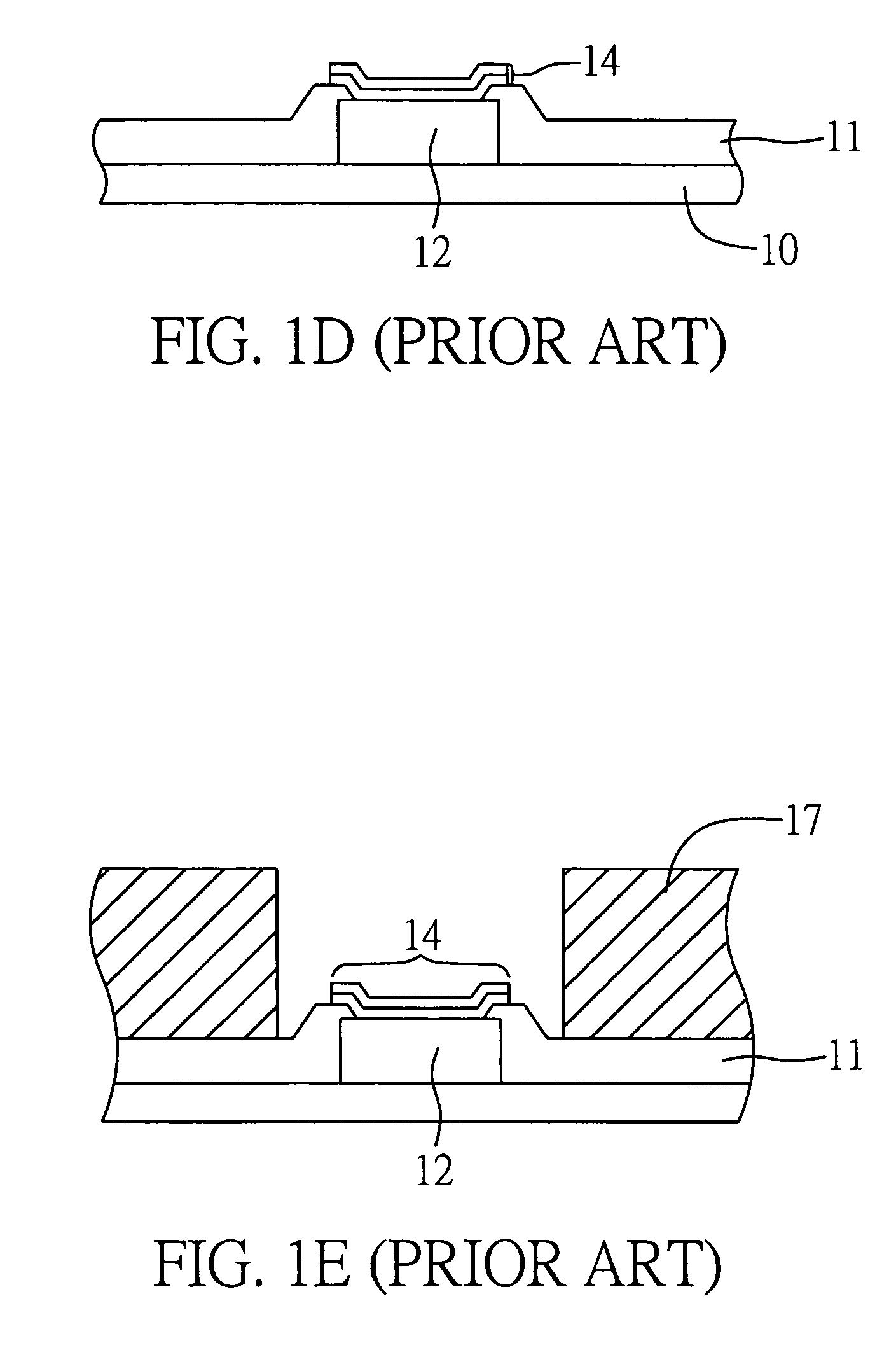Process for forming lead-free bump on electronic component
a technology of lead-free bumps and electronic components, which is applied in the direction of electrical equipment, semiconductor devices, semiconductor/solid-state device details, etc., can solve the problems of poor structural strength, reduced reliability of ag bumps, and restricted lead-contained electronic products, so as to achieve preferable mechanical strength and reliability, and increase the copper content of the solder layer
- Summary
- Abstract
- Description
- Claims
- Application Information
AI Technical Summary
Benefits of technology
Problems solved by technology
Method used
Image
Examples
first preferred embodiment
[0020]FIGS. 2A-2G show the procedural steps of a process for forming a copper-contained lead-free bump on an electronic component (such as chip) according to a first preferred embodiment of the present invention.
[0021]First, referring to FIG. 2A, a chip 20 is prepared having an active surface 20a on which a conductive trace layer including at least one bond pad 22 is formed. A passivation layer 21 is deposited on the conductive trace layer, with the bond pad 22 being exposed from the passivation layer 21. The passivation layer 21 is used to protect the conductive traces against external moisture and contaminants and electrically isolate the conductive traces from the outside.
[0022]Referring to FIG. 2B, an under bump metallurgy (UBM) structure 24 is formed over the passivation layer 21 and covers the bond pad 22. The UBM structure 24 comprises one or more metal layers that are usually made of aluminum-nickel / vanadium-copper (Al—Ni / V—Cu) alloy or a combination thereof, or can be selec...
second preferred embodiment
[0031]FIGS. 3A-3H show the procedural steps of the process for forming a copper-contained lead-free bump on an electronic component according to a second preferred embodiment of the present invention. The second embodiment differs from the above first embodiment in the aspects detailed below.
[0032]Referring to FIGS. 3A-3D, at least one bond pad 32 is formed on a chip 30, and a passivation layer 31 is applied over a surface 30a of the chip 30, with the bond pad 32 being exposed from the passivation layer 31. A UBM structure 34 is formed on the bond pad 32 and the passivation layer 31. A first photoresist 36 such as dry film is applied over the UBM structure 34 and has at least one opening corresponding in position to the bond pad 32. After a thick copper layer 38 is deposited by electroplating in the opening of the first photoresist 36, the first photoresist 36 and a part of the UBM structure 34 not covering the bond pad 32 are removed as shown in FIG. 3E, to expose the passivation l...
PUM
| Property | Measurement | Unit |
|---|---|---|
| thick | aaaaa | aaaaa |
| temperature | aaaaa | aaaaa |
| temperature | aaaaa | aaaaa |
Abstract
Description
Claims
Application Information
 Login to View More
Login to View More - R&D
- Intellectual Property
- Life Sciences
- Materials
- Tech Scout
- Unparalleled Data Quality
- Higher Quality Content
- 60% Fewer Hallucinations
Browse by: Latest US Patents, China's latest patents, Technical Efficacy Thesaurus, Application Domain, Technology Topic, Popular Technical Reports.
© 2025 PatSnap. All rights reserved.Legal|Privacy policy|Modern Slavery Act Transparency Statement|Sitemap|About US| Contact US: help@patsnap.com



